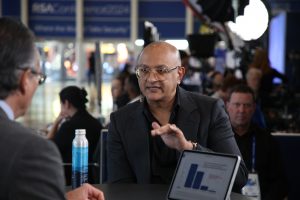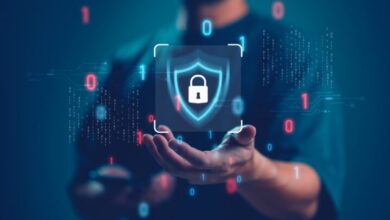Cisco Hypershield revamps cybersecurity with AI-powered defense

As cybersecurity threats continue to wreak havoc, an out-of-the-box strategy is needed for a holistic solution, according to Jeetu Patel (pictured), executive vice president and general manager of security and collaboration at Cisco Systems Inc.
As an AI-native platform, Cisco Hypershield is changing the cybersecurity game by effectively tackling segmentation, patching and updating challenges thanks to key advancements, such as artificial intelligence, hardware acceleration and kernel level visibility.
“It is singularly the most consequential thing we have done in our 40-year history at Cisco in cybersecurity,” Patel said. “Updates being hard, patching being hard, segmenting being hard are things that we’ve solved with this completely new architecture. We now have three of these core advancements that have happened: AI, kernel level visibility and hardware acceleration. Those three things allow us to completely reimagine solutions for these very hard problems.”
Patel spoke with theCUBE Research’s Dave Vellante at the RSA Conference, during an exclusive broadcast on theCUBE, SiliconANGLE Media’s livestreaming studio. They discussed how Cisco Hypershield offers next-gen cybersecurity solutions. (* Disclosure below.)

Cisco’s Jeetu Patel talks with theCUBE about how Cisco Hypershield offers next-gen cybersecurity solutions.
Extended Berkeley Packet Filter is part of Cisco Hypershield
To be able to effectively detect malware traversing the enterprise environment, having adequate visibility of what’s happening in the server is critical. As a result, Cisco Hypershield deploys an open-source technology, called Extended Berkeley Packet Filter, for enhanced kernel level visibility, Patel pointed out.
“In a world where the endpoint is compromised and the traffic is encrypted end to end, you have to have visibility on what’s happening in the server,” he said. “Extended Berkeley Packet Filter, what that technology does is it actually peers into the heart of the operating system and knows every IO operation. It knows every process that gets kick-started over there without actually sitting inside the kernel. It has a kernel-level effect, but it actually sits in user space.”
Segmentation is not a walk in the park, because whenever an exploit happens, figuring out how to contain the attack so that it does not spread internally is not easy. Non-disruptive updates are also hard, and this is why Cisco Hypershield tackles these issues through its automated and autonomous solutions, according to Patel.
“Segmentation is hard to solve in a hyper-distributed microservices world,” he explained. “We’ve actually solved that problem through autonomous segmentation. Updates are hard, because usually most of the time they happen twice a year. Dated infrastructure is one of the biggest risks that we have right now for protecting critical infrastructure in the nation.”
Cisco Hypershield is not just a new product; it’s an innovative way of thinking about cybersecurity thanks to compensating control and distributed exploit protection, according to Patel. As a result, this solution presents an automated short-term fix intended to stop the bleeding in case of an attack or exploit.
“In a matter of minutes, we can make sure that we have distributed exploit protection without actually having a patch,” he explained. “Even if the patch takes 45 days, we can have a compensating control applied to all enforcement points within a matter of nine to 15 minutes. It’s going to buy you an enormous amount of time.”
As AI continues to take the world by storm, Cisco Hypershield incorporates this cutting-edge technology for enhanced protection. This plays an instrumental role in taking cybersecurity to the next level, according to Patel.
“Rather than going out and having AI being thought of as an afterthought and a bolt-on, we built AI from the ground up in this term that we call AI-native,” he said. “That means when we thought about a defense through all these problems, we said, ‘Let’s make sure that AI is baked in.’”
Here’s the complete video interview, part of SiliconANGLE’s and theCUBE Research’s coverage of the RSA Conference:
(* Disclosure: TheCUBE is a paid media partner for the RSA Conference. Neither RSA Conference LLC, the sponsor of theCUBE’s event coverage, nor other sponsors have editorial control over content on theCUBE or SiliconANGLE.)
Photo: SiliconANGLE
Your vote of support is important to us and it helps us keep the content FREE.
One click below supports our mission to provide free, deep, and relevant content.
Join our community on YouTube
Join the community that includes more than 15,000 #CubeAlumni experts, including Amazon.com CEO Andy Jassy, Dell Technologies founder and CEO Michael Dell, Intel CEO Pat Gelsinger, and many more luminaries and experts.
THANK YOU



